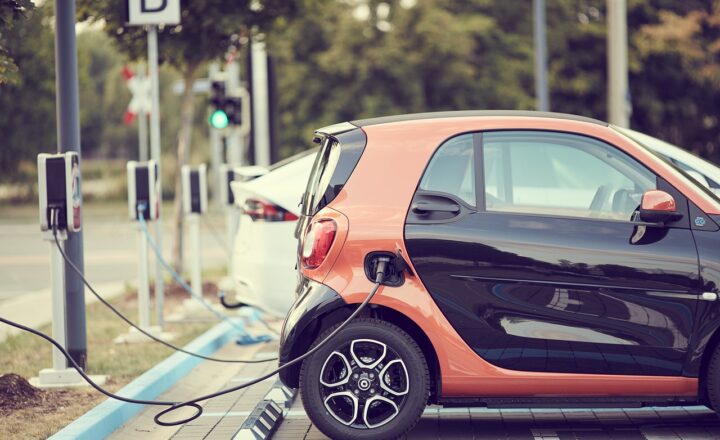Secrets of Eco-Friendly Cars: Innovations That Could Save the Planet
November 11, 2024

As global warming intensifies and pollution becomes an ever-pressing issue, the automotive industry has pivoted to foster sustainable practices. Eco-friendly cars have risen as a beacon of hope, combining advanced technology with lower environmental impact. This article delves into the innovative secrets behind eco-friendly cars that could not only revolutionize transportation but also save our planet.
What Are Eco-Friendly Cars?
Eco-friendly cars are vehicles designed with enhanced efficiency, lower emissions, and sustainable materials to minimize their impact on the environment. They typically fall into several categories:
- Hybrid Vehicles: Combine an internal combustion engine with an electric propulsion system, improving fuel efficiency while reducing emissions.
- Electric Vehicles (EVs): Powered entirely by electricity stored in batteries, producing zero tailpipe emissions.
- Hydrogen Fuel Cell Vehicles: Generate electricity from hydrogen and oxygen, emitting only water vapor as a byproduct.
- Biofuel Vehicles: Use renewable fuels derived from plant or animal materials, reducing reliance on fossil fuels.
These vehicles leverage technology to face the climate crisis head-on, showcasing innovations that promise a greener future.
Innovations in Eco-Friendly Cars
To understand the potential of eco-friendly cars, let’s explore groundbreaking innovations that are setting benchmarks in sustainability and efficiency.
1. Battery Technology Advancements
Battery technology is pivotal to the success of electric vehicles (EVs).
Recent advancements include:
- Solid-State Batteries: Offering higher energy density than conventional lithium-ion batteries, solid-state batteries are lighter, faster to charge, and significantly safer due to their reduced flammability.
- Battery Recycling Programs: These initiatives aim to recover and repurpose materials from spent batteries, minimizing waste and reducing the need for raw materials.
- Fast Charging Solutions: Technologies like ultra-fast chargers, which can significantly reduce charging time for EV owners, contribute to more convenient and widespread EV adoption.
A robust battery infrastructure is critical for decreasing range anxiety and promoting eco-friendly car usage.
2. Lightweight Materials
Reducing vehicle weight is essential to improve fuel efficiency. Eco-friendly cars increasingly utilize alternative materials such as:
- Aluminum: Lighter than steel, aluminum helps reduce overall vehicle weight while maintaining strength and safety standards. This is crucial for enhancing fuel efficiency in hybrid and traditional vehicles alike.
- Carbon Fiber Composites: Driving innovations in performance vehicles, carbon fiber is not only lightweight but also has a high strength-to-weight ratio, making it perfect for eco-friendly models.
- Recycled Materials: Many manufacturers now use recycled plastics, metals, and other materials, reducing waste during production and helping the environment on multiple fronts.
Utilizing lightweight materials enhances efficiency without compromising safety – a must for eco-conscious consumers.
3. AI and Smart Technology
Artificial Intelligence (AI) is transforming the automotive landscape by optimizing vehicle performance and energy consumption. Important advancements include:
- Predictive Maintenance: AI algorithms analyze data to predict maintenance needs, reducing downtime and extending vehicle lifespan while enhancing performance efficiency.
- Intelligent Energy Management Systems: These systems offer real-time data analytics to optimize power consumption in hybrid and electric vehicles, ensuring drivers can maximize their eco-friendly capabilities.
- Autonomous Driving Technologies: Incorporating AI into driving systems can potentially minimize accidents, optimize fuel consumption, and create a smoother driving experience, which contributes to reduced emissions.
Leveraging AI not only heightens the efficiency of eco-friendly cars but also paves the way for safer roads and less environmental damage.
4. Enhanced Aerodynamics
The design and shape of a vehicle can greatly influence its fuel efficiency. Key aerodynamic innovations include:
- Active Aerodynamics: Some eco-friendly cars now feature systems that adjust and optimize airflow around the vehicle, reducing drag and consequently enhancing fuel economy and efficiency.
- Streamlined Designs: Manufacturers are continually refining vehicle shapes to minimize wind resistance. Low-slung designs and rear spoilers help achieve this goal, significantly saving energy during travel.
- Eco-Friendly Tires: These specially designed tires reduce rolling resistance and improve fuel economy. They often include low-profile sidewalls and unique tread designs.
Through smarter designs, automotive engineers are enabling eco-friendly cars to achieve greater efficiency on the road.
5. Renewable Energy Integration
Many manufacturers are working to integrate renewable energy sources into their vehicles. Here’s how:
- Solar Panels: Some models feature integrated solar panels that charge the battery while parked or driving during the day, further reducing the vehicle’s carbon footprint.
- Green Charging Solutions: Innovations in charging stations that utilize renewable energy sources ensure the electricity powering eco-friendly cars is sourced sustainably, enhancing their overall eco-friendliness.
- Partnerships with Renewable Energy Providers: Automakers are forming alliances to promote the use of clean energy both in production and vehicle operations.
These innovations not only reduce dependence on fossil fuels but also signify a shift towards a sustainable automotive future.
The Future of Eco-Friendly Cars: What Lies Ahead?
The future of eco-friendly vehicles holds immense potential as technology continues to evolve. We can expect:
- More Efficient Technologies: Innovations in battery tech, alternative fuels, and AI-driven solutions will drive further advancements in eco-friendly vehicles.
- Greater Consumer Adoption: As costs decrease and awareness increases, more consumers will opt for eco-friendly options, changing the automotive landscape.
- Sustainable Manufacturing Practices: Major automakers are expected to invest in sustainable practices, reducing waste and creating a green supply chain for vehicle production.
With public awareness and technological feats playing crucial roles, the drive for eco-friendly cars could change the world.
Conclusion
The automotive industry is reinventing itself in the face of climate change. Eco-friendly cars embody an evolving landscape of innovation, sustainability, and ethical responsibility. From advancements in battery technology to lightweight materials and renewable energy integration, the secrets behind these vehicles paint an optimistic picture for the future of our planet. As consumers and manufacturers alike embrace eco-conscious alternatives, the journey towards a cleaner and greener world on wheels becomes increasingly attainable. The fate of our environment may hinge on our collective decision to support eco-friendly innovations in transportation.







